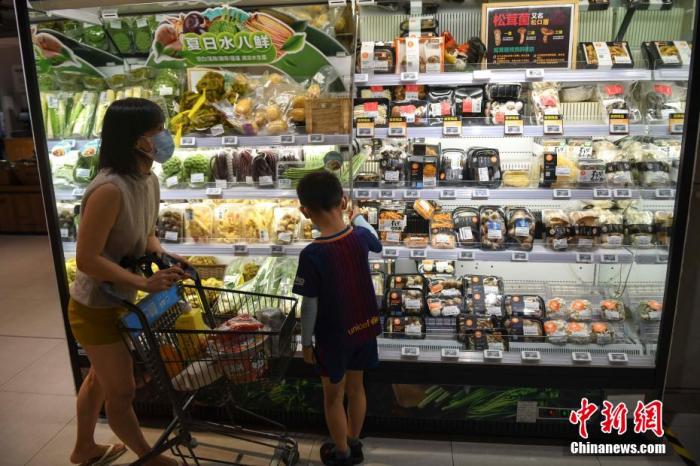China News Service, September 14th. Liu Jinfeng, deputy leader of the Healthy China Action Rational Diet Action Working Group and Director of the Food Department of the National Health and Health Commission, said on the 14th that as of now, 1366 food safety standards have been announced, involving 20,000 A number of indicators, including general standards, product standards, production specifications and inspection methods standards.
Data map: People buy food in supermarkets.
(Image and text irrelevant) Photo by Yang Huafeng
The National Health Commission held a press conference on the 14th to introduce the results of the implementation of the Healthy China Action Reasonable Diet Action in the past two years.
At the meeting, a reporter asked a question. Previously, the state issued a document requiring food safety to adhere to the "four strictest standards," including the "most rigorous standards." How to understand the most rigorous food safety standards?
How to ensure the "safety on the tip of the tongue" of the people?
In this regard, Liu Jinfeng said that in terms of food safety, the main responsibility of the Health Commission is to formulate and revise food safety standards.
Generally speaking, the role of food safety standards is to transform food safety risks that ordinary consumers cannot judge into easy-to-read safety signals and clear risk warnings. This is a basic understanding of the standards.
Furthermore, food safety standards are preventive measures to prevent risks, and food that meets food safety standards should be safe.
Production that does not meet food safety standards is illegal and should be punished.
In other words, food safety standards are mandatory.
"In our work practice, we have learned that procedures must be standardized and transparent, indicators must be scientifically applied, food safety risk monitoring and risk assessment must be used as the basis, and they must conform to China’s national conditions and international practices. Understanding the'most rigorous standard' at different levels." Liu Jinfeng said.
"Up to now, 1366 food safety standards have been published, involving more than 20,000 indicators, including general standards, product standards, production specifications, and inspection method standards." Liu Jinfeng pointed out that the four types of standards are organically connected and complementary to each other. The management and control of food safety risks from the perspective of my country covers the main food categories consumed by Chinese residents, the main health hazards, and the nutritional needs of key populations.
In terms of food category, it covers major food categories such as primary agricultural products and processed products involved in the production and consumption of the food industry; in terms of health hazards, the current standards cover pathogenic microorganisms, heavy metals, mycotoxins, and radioactivity. Substances and other control requirements also include limit requirements for food additives, pesticide and veterinary drug residues.
In terms of key populations, standards such as infant formula foods and formula foods for special medical purposes cover the basic nutritional and health needs of key populations.
"In general, we have established a national food safety standard system that is in line with international standards from farmland to table." Liu Jinfeng said that my country is the host country of the International Food Additives Codex Committee, and the National Food Safety Risk Assessment Center is responsible for the secretariat. Specific work, in-depth participation in the work of the International Codex Alimentarius, reflects our standard work level and the recognition of the international community.

